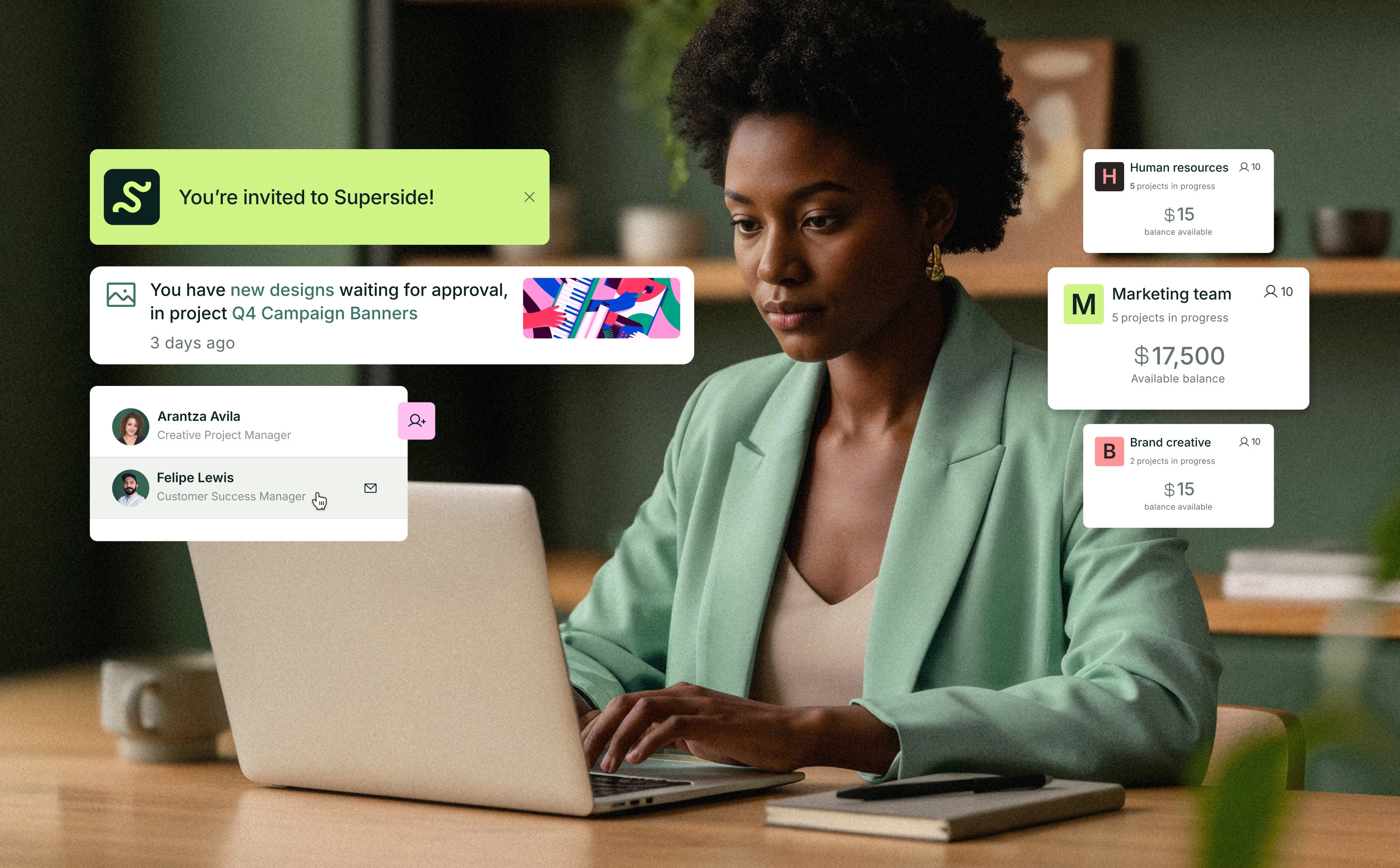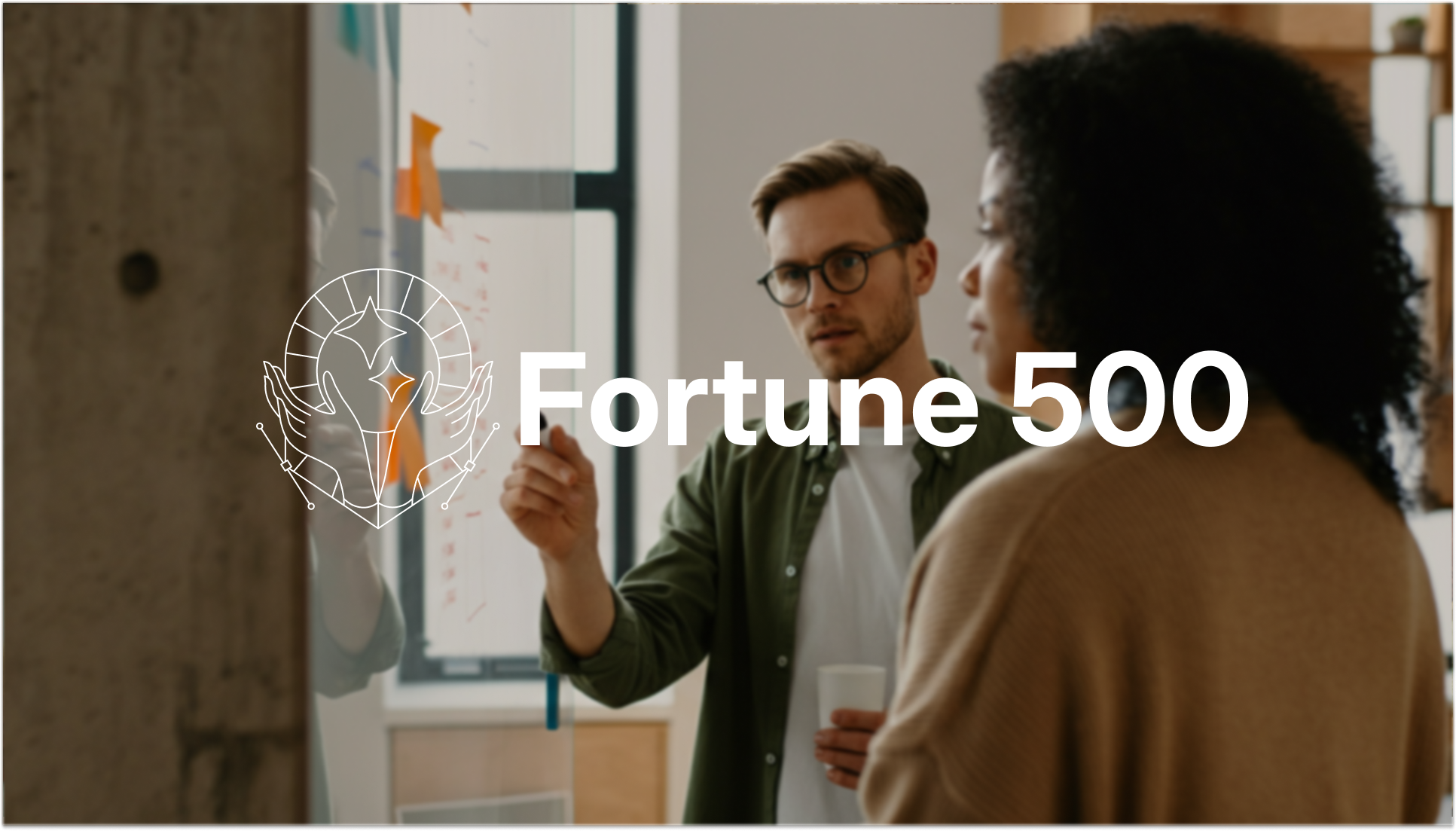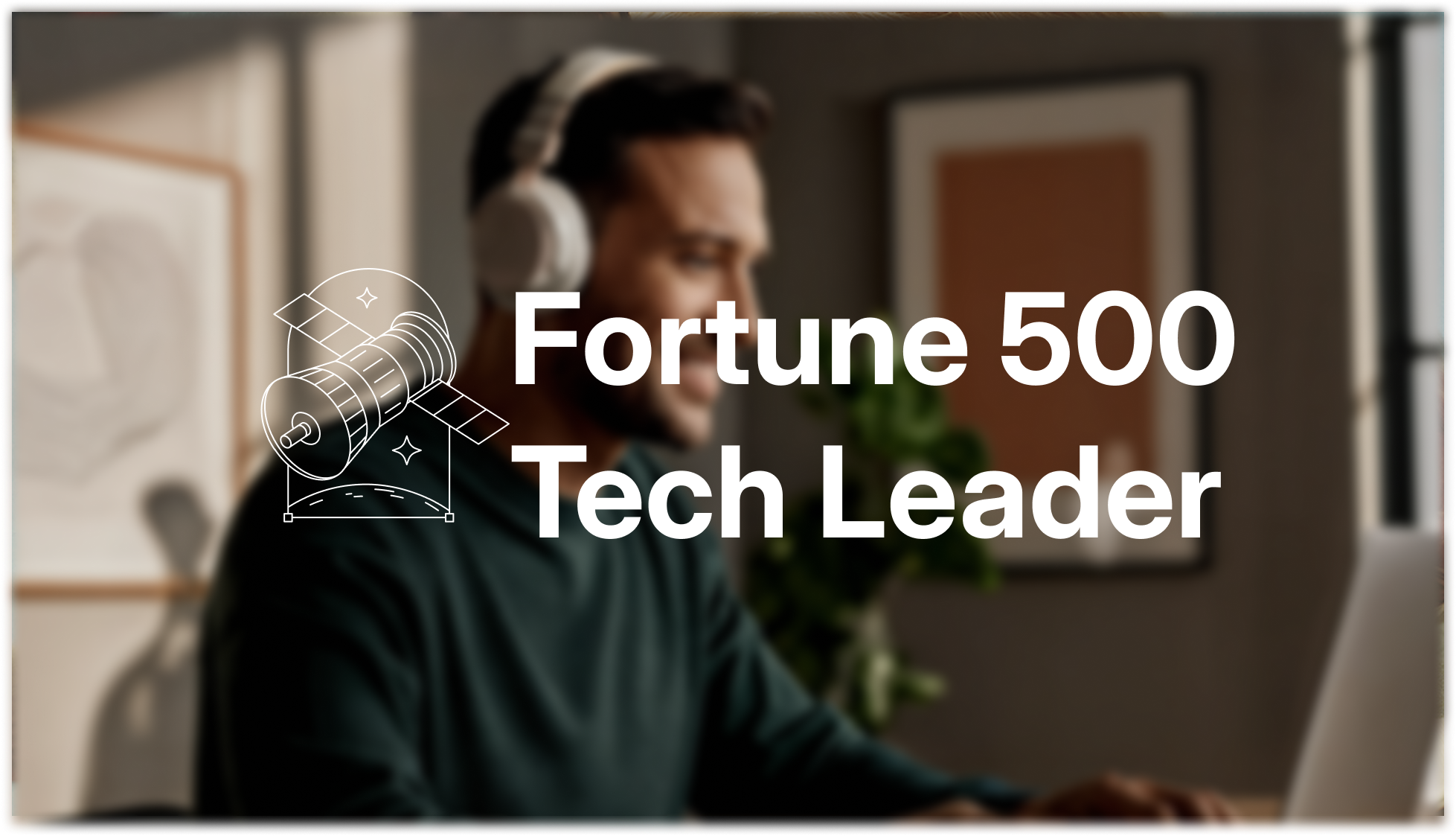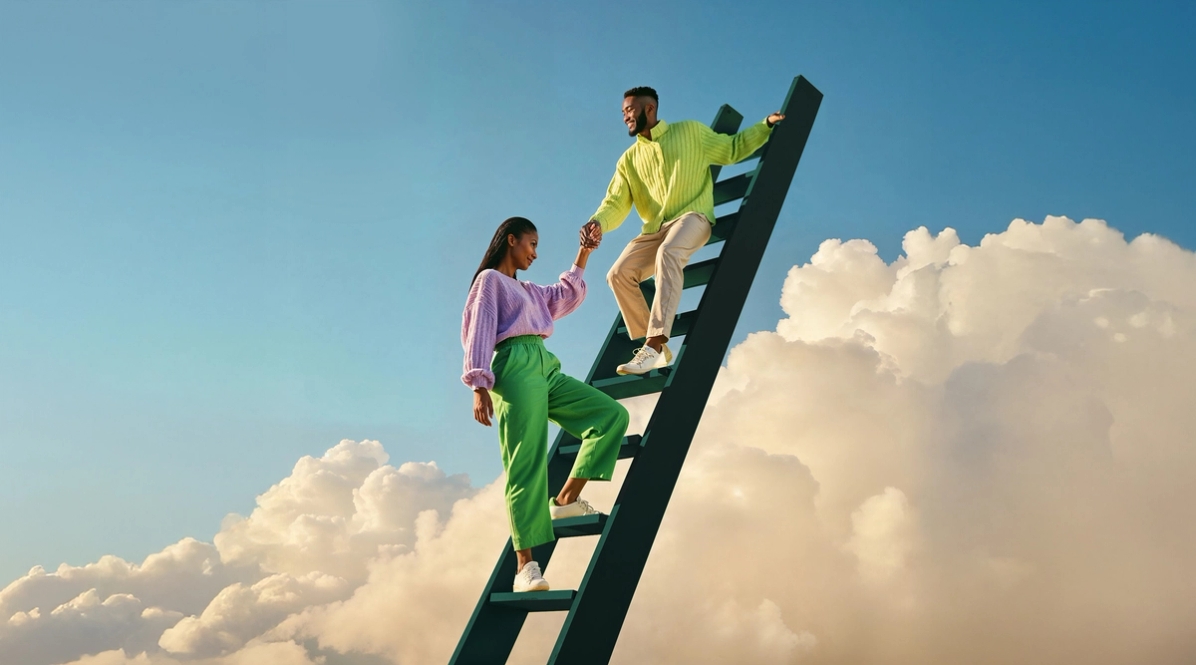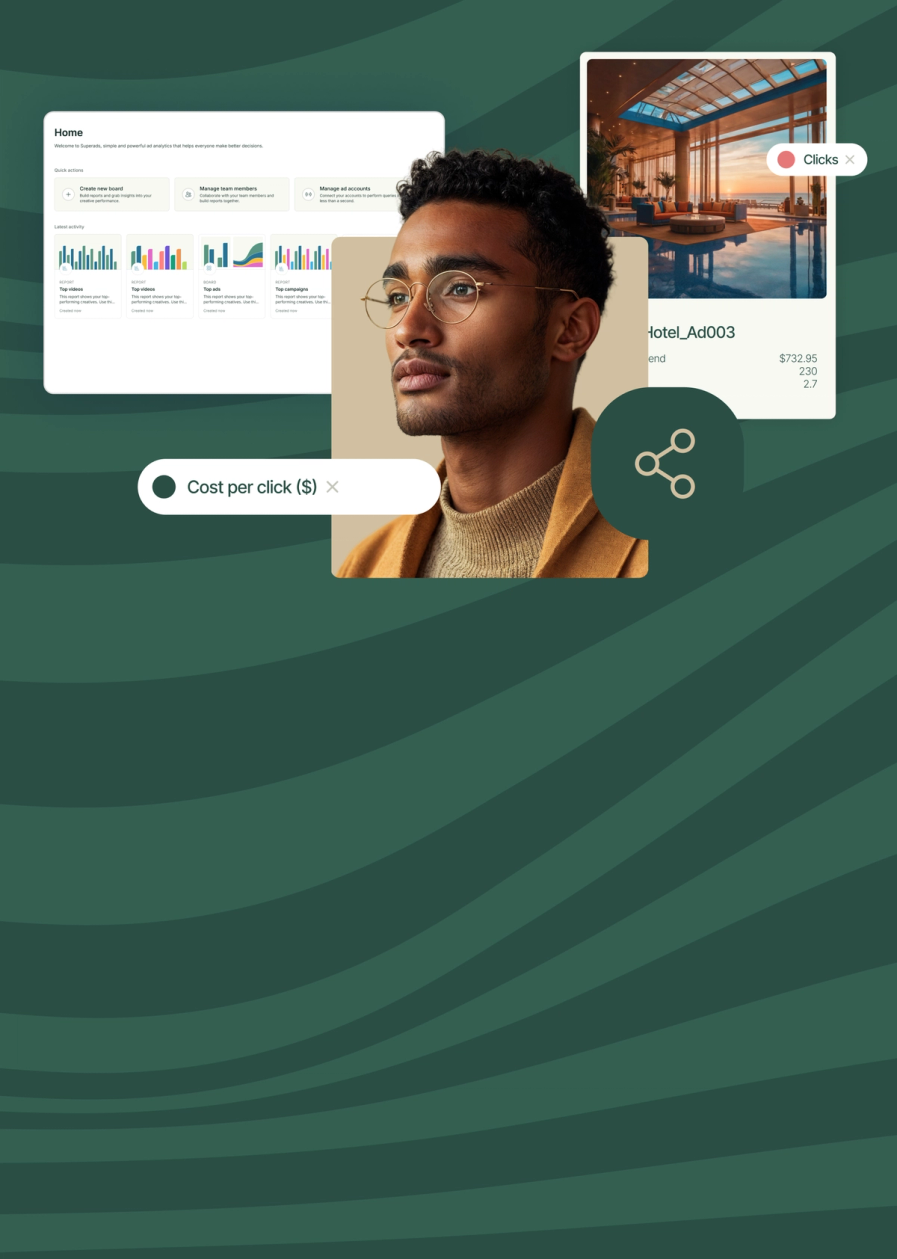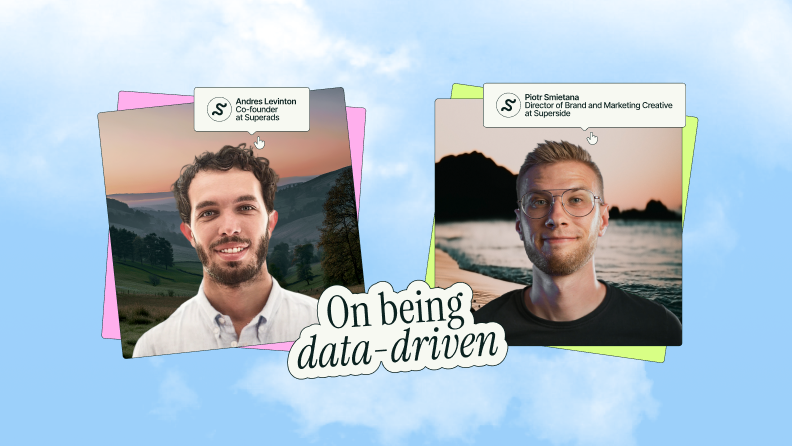
Being data-driven doesn’t mean playing it safe—it means using insights to fuel bolder, smarter creative. At Superside and Superads, data and instinct go hand in hand to drive real results.
Great campaigns don’t just look good—they perform. But getting creative to yield real business results requires more than just good instincts or a clever tagline.
In today’s landscape, where every impression counts and attention is scarce, you need strategy. You need insight. And most importantly, you need alignment between the creative and the data.
In other words, being data-driven is essential. For Andres Levinton, Co-founder at Superads, and Piotr Smietana, Director of Brand and Marketing Creative at Superside, this doesn’t mean choosing data over creativity—it means using both, intentionally.
Levinton and Smietana dug into what that looks like in our latest guide, Inside Great Creative Partnerships, including:
- Why dashboards aren't everything
- How to find meaning in metrics
- What to do instead of A/B testing
- How to align creatives and marketers around metrics
When done right, data doesn’t restrict creativity. It fuels bolder ideas, sharper instincts, and higher-impact campaigns—especially in the high-stakes world of B2B and enterprise marketing.
The compass, not the map
It’s not about chasing a magic formula or leaning on dashboards alone.
“Being data-driven, for me, is just like using data as a creative compass,” said Smietana. “Trying to understand what’s working, why it’s working... so I can make braver and safer choices later.”
In fact, Smietana pushes back on the assumption that being data-driven means being number-obsessed. “People sometimes mistake data-driven for spreadsheets and dashboards. But instinct is data too. Experience is data. Taste is data. When you’ve created 100 ads, you develop an instinct—that’s your own internal dataset.”
You can have all the ideas in the world, but what good are they if you can’t make them work?

Levinton agreed, while bringing in the marketer’s lens: “No one can act just on gut feeling anymore… but at the same time, advertisers shouldn’t be data fundamentalists. Your strategy needs to be based on actual insights—what’s performing, what’s resonating.”
Beyond the metrics: Interpreting the story
Ask either leader which metrics matter, and you’ll get a similar answer: It’s not the numbers, it’s the narrative.
“Yes, we look at CTRs and CPAs,” said Smietana. “But what are they telling you? The click-through rate, for example—that’s literally how people are reacting. Are they sharing things? Quoting us? Commenting? That tells me we hit something.” Levinton seconded this line of thinking. For him, it's about identifying the story the metrics are telling and going from there.
It’s not about specific metrics in isolation. It’s about what story those metrics tell—and what actions you take from them.

As we’ve seen, translating that story for creatives is key for guiding work that gets results. But let’s get real, the thought of looking at numbers in a spreadsheet doesn’t inspire most creatives. Nor does a “2% CTR” mean much in isolation.
Levinton recognized the increasing challenges teams faced and spearheaded a solution: A metrics framework within the Superads platform that puts these types of numbers into context. Superads is an AI-powered reporting tool that analyzes paid social campaigns, helping marketing and creative teams be more data-driven.
A marketer might say, ‘We have 2% CTR,’ and the creative team wouldn’t know what that means. So we built Superads scores—scores like hook, click, hold and conversion—each rated from 0 to 100. That way, anyone can say, ‘Hey, this ad has a 90 hook score—it really stops people.’ That opens up a better conversation.

The key here is giving context to absolute values. When you share meaning instead of just metrics, you open the door for better collaboration between creative and marketing teams based on a shared understanding of what’s resonating beyond clicks.
Test big and take risks to get results
When it comes to testing, both leaders agreed: The era of micro-optimization is over. “Strict A/B testing is becoming less popular,” said Levinton. “What we’re seeing now is a priority on creative volume and boldness over minor tweaks.”
So instead of testing button colors or copy tweaks, Smietana and Levinton advocate for bigger swings. “If you test 10 different creatives and one massively outperforms, now you have direction,” said Smietana. “You can always do things better. You can always release another ad.”
Shoot 10 things at the wall. One might have a CPA of $200, the rest might be $1,000. That’s how you learn.

And again, both leaders agreed there’s no conflict between data and bold creative—it’s a partnership.
Smietana explained, “I always want to start with something that feels risky. I hate mediocrity. Especially now with AI, everything starts to look the same. I want to break that, make people feel something first. Then I ask, how do I make it convert?”
Levinton backed him up:
There’s no battle between data and creative. You need bold ideas. Then validate with data if they make sense.

Bridging the divide: One goal, one team
What makes Superside’s creative-marketing partnership work isn’t just shared tools—it’s shared ownership. Smietana pointed out, “Historically, creatives avoided data. But that’s changing. Our team is actually curious—asking, ‘Why did this work?’ Sometimes the answers surprise us.”
One of the secret ingredients? Celebrating wins together.
As soon as you make it less about performance vs. creative and more about our team making ads that win, it becomes less about who owns the data and more about the impact.

Where data meets creative courage
In an era where generic content is easy to produce, being bold is more important than ever. But boldness without insight is a gamble—and data without creativity is just noise.
What sets teams like Superside and Superads apart is their ability to blend the two: Fearless creative thinking, grounded in performance data and sharpened through iterative learning. It’s not data versus creativity. It’s data in service of creativity—and creativity in pursuit of real, measurable results.
For more insights on aligning marketing and creative—and getting those real, measurable results—be sure to check out our full guide, Inside Great Creative Partnerships.



